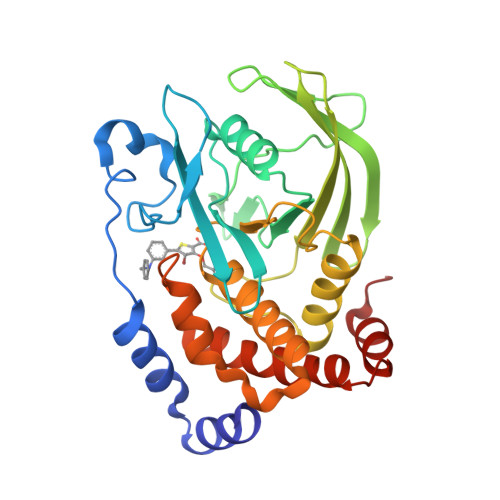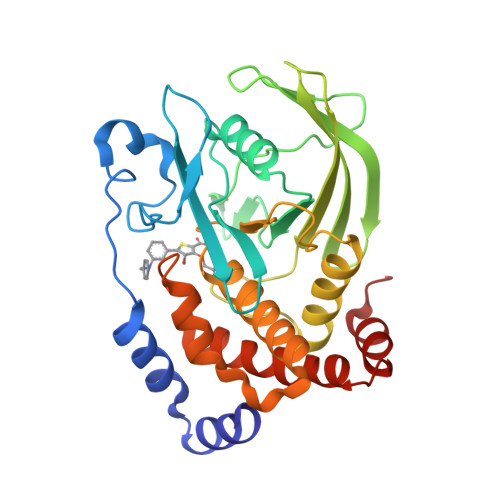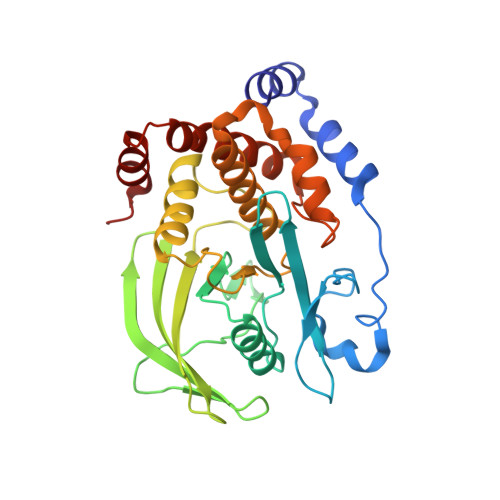Structure-based optimization of protein tyrosine phosphatase 1B inhibitors: from the active site to the second phosphotyrosine binding site.
Wilson, D.P., Wan, Z.K., Xu, W.X., Kirincich, S.J., Follows, B.C., Joseph-McCarthy, D., Foreman, K., Moretto, A., Wu, J., Zhu, M., Binnun, E., Zhang, Y.L., Tam, M., Erbe, D.V., Tobin, J., Xu, X., Leung, L., Shilling, A., Tam, S.Y., Mansour, T.S., Lee, J.(2007) J Med Chem 50: 4681-4698
- PubMed: 17705360
- DOI: https://doi.org/10.1021/jm0702478
- Primary Citation of Related Structures:
2QBP, 2QBQ, 2QBR, 2QBS - PubMed Abstract:
Protein tyrosine phosphatase 1B (PTP1B) is a negative regulator of the insulin and leptin receptor pathways and thus an attractive therapeutic target for diabetes and obesity. Starting with a high micromolar lead compound, structure-based optimization of novel PTP1B inhibitors by extension of the molecule from the enzyme active site into the second phosphotyrosine binding site is described. Medicinal chemistry, guided by X-ray complex structure and molecular modeling, has yielded low nanomolar PTP1B inhibitors in an efficient manner. Compounds from this chemical series were found to be actively transported into hepatocytes. This active uptake into target tissues could be one of the possible avenues to overcome the poor membrane permeability of PTP1B inhibitors.
Organizational Affiliation:
Chemical and Screening Sciences, and Cardiovascular and Metabolic Diseases, Wyeth Research, 200 Cambridge Park Drive, Cambridge, Massachusetts 02140, USA.



















